BY SERGEY KADINSKY
Forgotten NY correspondent
On a recent return to Mosholu Parkway in search of the long-buried Schuil Kill stream, I noticed a red-colored garage building on East Mosholu Parkway South across the street from the parkway. Being in proximity to Webster Avenue, I initially thought that this nondescript building was a substation for the Third Avenue El, which ran above Webster Avenue until 1973.
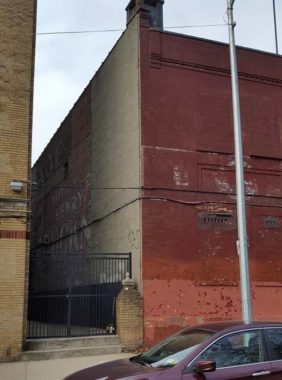
That’s not the case but upon a closer look I noticed a colorful advertising mural in the alley on the garage’s left side.
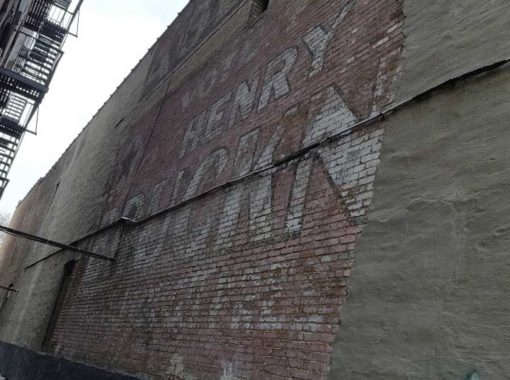
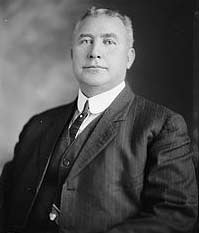
Henry Bruckner for Borough President. The namesake of Bruckner Boulevard and Expressway, and Junior High School 101 first ran for Bronx borough President in 1917, making this mural more than a century old. At the time that it was executed, the ad faced Webster Avenue, which received elevated subway tracks in 1920. (The Indispensable) Walter Grutchfield found this ad before me and provides a detailed summary of Bruckner’s political and business careers. The ad is well-preserved on account of the neighboring apartment building that keep it hidden from sunlight and pollution.

Mosholu Parkway has a long history of its own as a sister road to Olmsted’s Pelham, Ocean, and Eastern Parkways. Kevin Walsh walked the route of Mosholu Parkway in Oct. 2010.
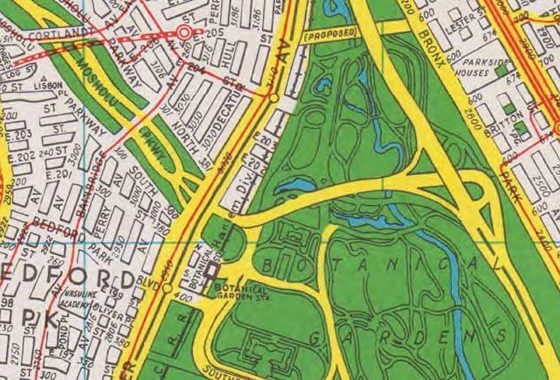
The city’s master builder of the mid-20th century, Robert Moses built many highways across the city, most (in)famously the Cross-Bronx Expressway that was rammed through the borough in the 1950s. But he didn’t always get his way. His proposal to transform the park-like Mosholu into a highway running through the New York Botanical Gardens to connect with Bronx River Parkway as seen in this 1959 Hagstrom map. This 1.2-mile extension was never completed. Vehicles traveling between the Mosholu and Bronx River Parkways must use the one-lane Allerton Avenue connection. Plenty of traffic backups here, but the egret, turtle, and frog habitat was saved.

Less than a block away from the Bruckner mural where Mosholu Parkway runs above Webster Avenue is Frisch Field, named after a Fordham alum who found success playing for the NY Giants and the St. Louis Cardinals. He died in 1973, the year when the Third Avenue El was demolished. In this 1935 photo from the Municipal Archives, we see the Webster Avenue section of the subway line running atop graceful arches resembling those of Manhattan’s Riverside Drive Viaduct. Among the city’s elevated lines, the design tends to be functional, the few exceptions being the Sunnyside Viaduct on the 7 train, and the dramatic arch of the 125th Street station on the 1 train. Today’s Bronx residents are baffled by the city’s shortsighted decision in 1973 to remove the elevated line. With the borough’s population on the rebound, it certainly would have been useful in this century.
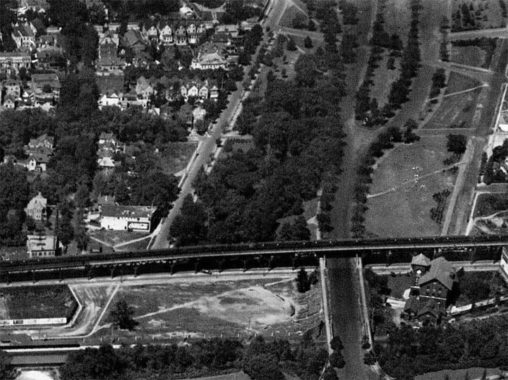
Another clue for the preservation of the Bruckner election mural can be seen in this 1924 aerial photo of the site from the Bronx Third Avenue El Facebook album, where a Coca-Cola billboard covers the mural, shielding it from the sun and by then Bruckner was comfortably in office as Borough President, which he would hold through 1933. You can pay your respects to Bruckner at the nearby Woodlawn Cemetery.
The elevated tracks arrived here in 1920, but the apartment building and the Frisch baseball field had not yet been developed. The distinctive clocktower of the 41st (now 52nd) Precinct adds to the small-town feel of the neighborhood at the time. Next to the precinct one can see tracks branching off the main line of the Metro-North. This was the Jerome Park spur that operated from 1880 to 1906, serving a horse racing track on the site of today’s Jerome Park Reservoir.
Bruckner’s isn’t the only old-time election mural found in the Bronx. There’s also Rep. Paul Fino, who served in Congress as a Bronx Republican from 1952 through 1968. Gary Fonville wrote about that mural back in 2012.
In the 2016 presidential election, a mural promoting Democratic Socialist Bernie Sanders appeared near the Major Deegan Expressway, a crowdfunded project unrelated to his campaign. Designed by artist Taylor Sommer, it hasn’t fared as well as Bruckner and Fino’s election murals.
Sergey Kadinsky is the author of Hidden Waters of New York City: A History and Guide to 101 Forgotten Lakes, Ponds, Creeks, and Streams in the Five Boroughs (2016, Countryman Press) and the webmaster of Hidden Waters Blog.
Check out the ForgottenBook, take a look at the gift shop, and as always, “comment…as you see fit.”
1/28/19

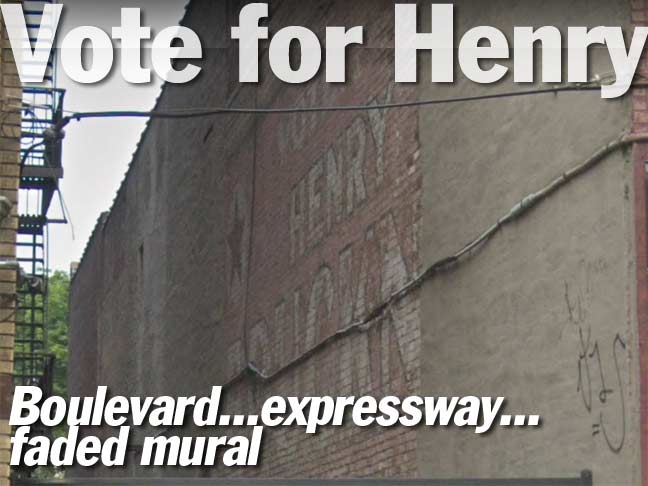
1 comment
There’s a lot more to say about Frank Frisch than he was a Fordham alum who played for the St. Louis Cardinals. He was a true hometown sports hero, who grew up in The Bronx, was an athletic superstar at Fordham University, and starred for the hometown New York Giants at the nearby Polo Grounds before he was traded to St. Louis after a dispute with his tempestuous manager John McGraw. He later became a radio broadcaster for the Giants games, and was elected to the Hall of Fame in 1947.
Here’s the link to his Hall of Fame page: https://baseballhall.org/hall-of-famers/frisch-frankie. Note that he’s wearing a NY Giants cap in the photo.